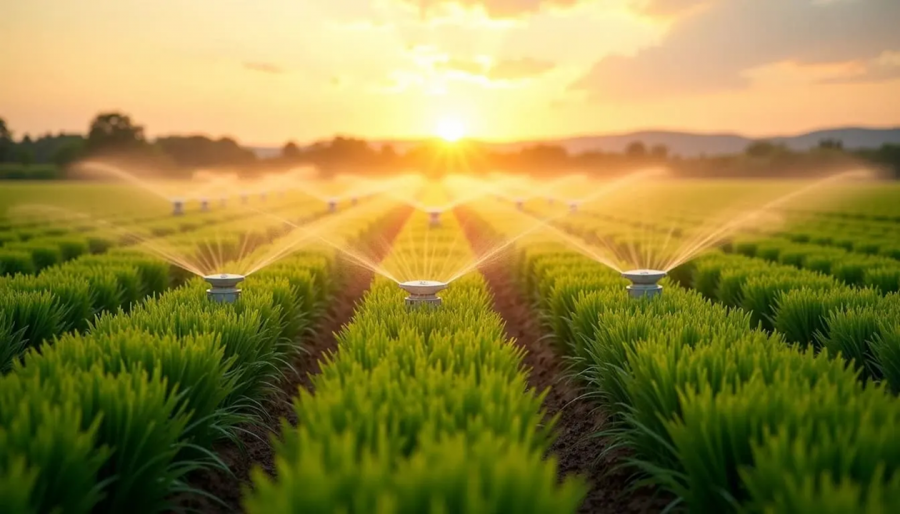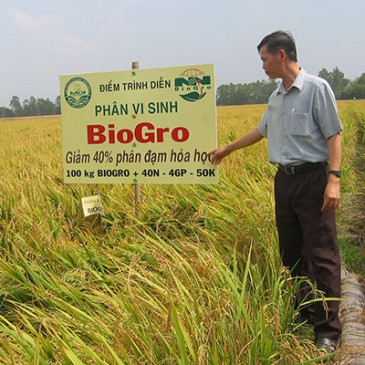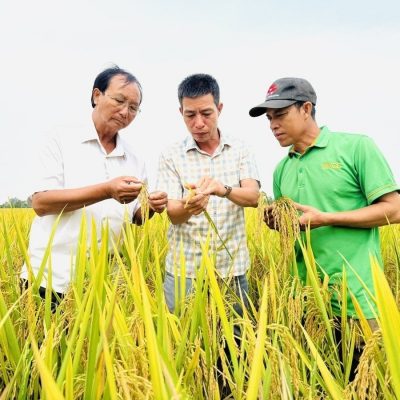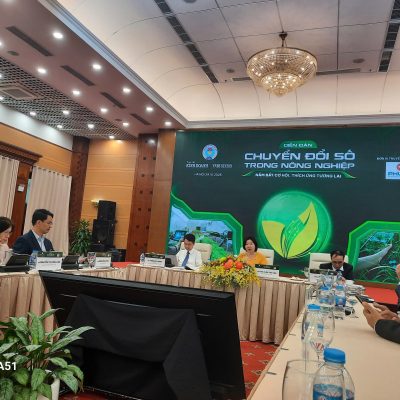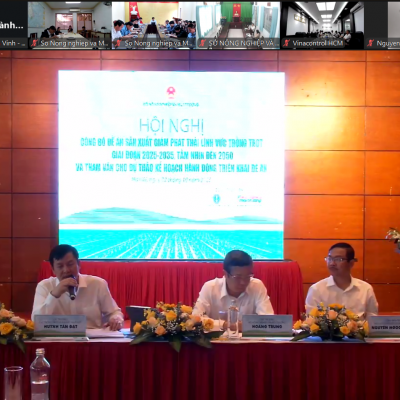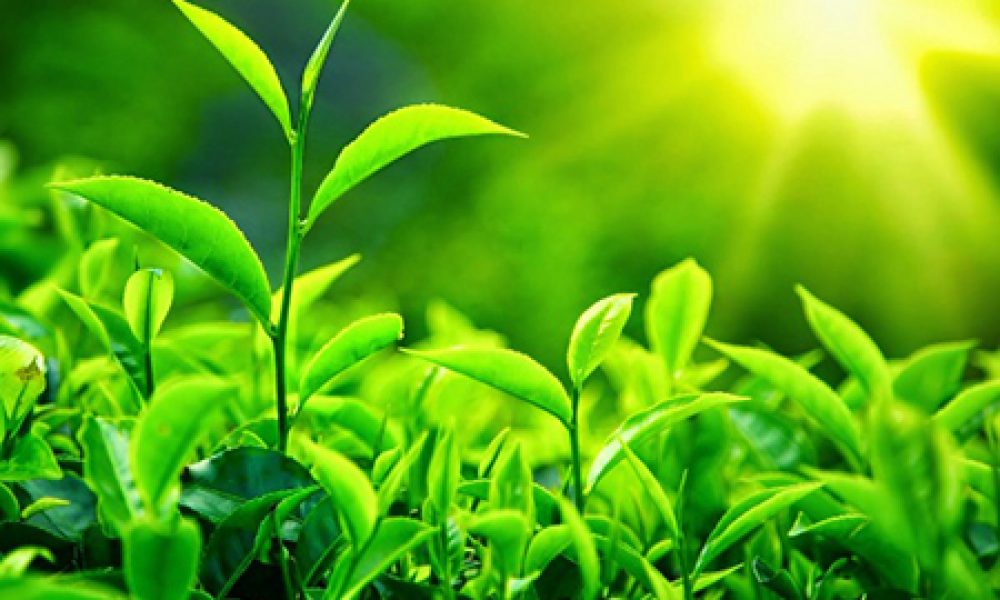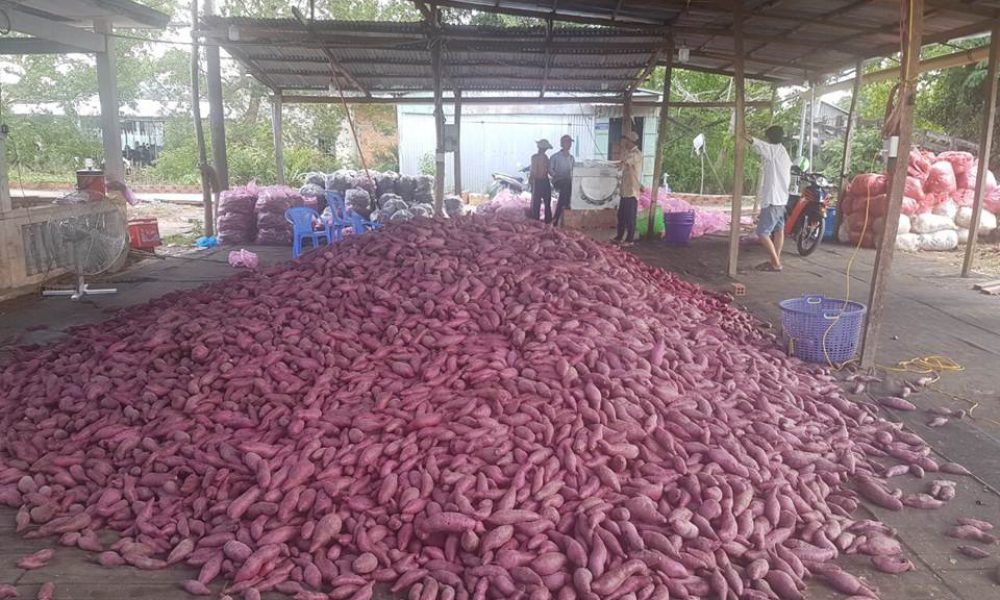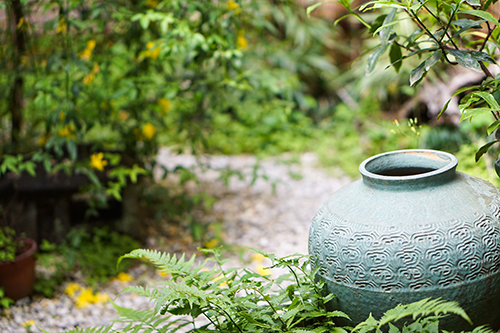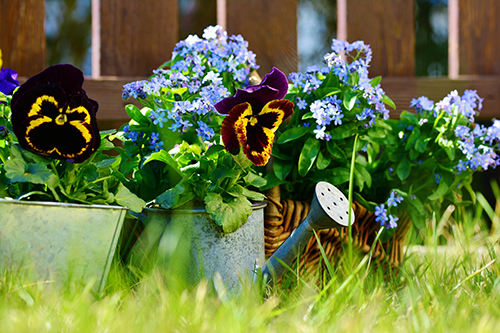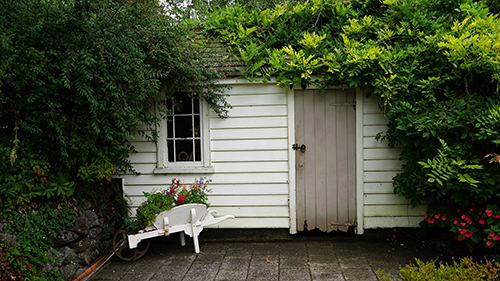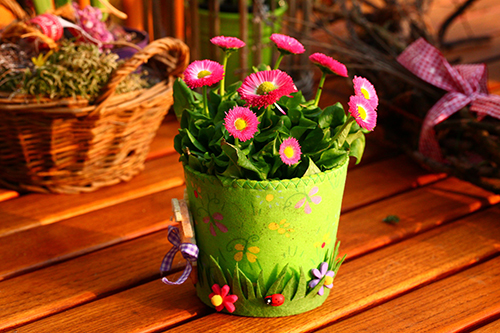The world agriculture has achieved great achievements in the past century, Especially the Green Revolution, Helps increase crop productivity significantly and ensure food security for global population is increasing.
However, The intensive agricultural model is based on synthetic chemicals (fertilizer chemistry, need a good irrigation system and from year five - Plant) and heavy mechanization also revealed serious left faces. It causes land recession, Water pollution, loss of biodiversity, Greenhouse gas emissions and negative effects on human health.
In that context, Organic Agriculture (NNHC) Emerging as an alternative farming method, A production philosophy towards harmony with nature, Sustainable and environmentally friendly. NNHC is not only "not using chemicals" but also one Comprehensive production management system, promote and enhance the health of agricultural ecosystems (agro-ecosystem), Including biodiversity, Biological cycles and biological activities in the soil.
It emphasizes the use of local resources, Natural farming measures and completely prohibit the use of general input materials such as chemical fertilizers, Chemical pesticides, genetically modified organisms (GMO).
This article will go in -depth to learn the core principles of NNHC and analyze in detail the diverse benefits that this farming method brings to environmental protection., At the same time consider the development of NNHC in Vietnam.

1. What is organic agriculture? Core principles
NNHC works based on a philosophy of respect for natural laws and towards ecological balance, Social justice and long -term economic efficiency. The principles and practices include:
- Building and maintaining soil health: The land is considered to be the survival foundation of NNHC. Instead of "raising trees" with chemical fertilizers, NNHC focuses on "raising land" by:
- Enhance organic matter: Use compost feces (Fertilizer), Handling manure, green stool (greener), Return plant residues to the soil.
- Stimulate earthquake activities: Create a favorable environment for earthworms, Useful microorganisms grow.
- Minimize plowing: Apply minimum or not plow soil measures to protect the soil structure, Limit the loss of organic matter and erosion.
- Crop nutrition management: Based on natural nutrition cycles in the farm system:
- Crop rotation: Plant different types of trees in the order of time on the same piece of land to improve fertility, Disrupt pests and diseases.
- Alternate, Da Canh: Plant many types of trees at the same time to take advantage of the space, the light, Nutrition and mutual support.
- Planting: These plants have the ability to fix protein from air, Enrich the nutrition for the soil.
- Using organic fertilizer: Compost, manure, Blue feces provide nutrition slowly and balance.
- Pest management and weeds: Priority to prevent and naturally instead of using chemical drugs:
- Choose anti -disease varieties, Suitable for local conditions.
- Apply rotation, intercropping to control pests and diseases, weed.
- Use biological measures: Raise the natural enemy (Insects are useful), Use probiotics (The implementation of the EVFTA Agreement will help improve the export competitiveness of Vietnamese agricultural products in difficult markets of the EU., antagonistic bacteria).
- Physical/mechanical measures: Manual weeding, base, Use pheromone trap, Cover ...
- Protect and create a living environment for natural enemies.
- Enhance biodiversity: Encourage the diversity in and around the farm:
- Planting, crop, livestock.
- Maintain green fences, dust, Natural ponds to create residence and food sources for useful species (Restrict visitors, insect pollination, natural enemy).
- Conservation of water sources:
- Use irrigation water effectively, saving (drip, Rain spray when needed).
- Protect surface water and groundwater from the risk of pollution from farming activities.
- Animal welfare (In organic animal husbandry): Make sure animals are raised in conditions close to nature, be provided with organic food, Do not use antibiotics, Hormone growth in a regular basis, There is a movement space and show natural behaviors.
- Absolutely prohibited synthetic materials: Do not use chemical fertilizers, Chemical pesticides (subtract, except, except), General growth stimulant drug, genetically modified organisms (GMO) and sewer sludge.
To ensure compliance with these principles and create confidence for consumers, NNHC often comes with the system Organic certification By an independent organization, reputation.
2. Outstanding benefits of organic agriculture to the environment
Compared to conventional agriculture, NNHC brings many important and sustainable benefits to the environment:
- Improve the health and fertility of the soil:
- Way: The continuous addition of organic matter (compost, Blue feces ...) and reducing plowing to increase humus content in the soil. Mudsters improve soil structure (porous, airy), Increase water retention and nutrition, At the same time, it is a source of food for a rich soil creature (bacteria, The implementation of the EVFTA Agreement will help improve the export competitiveness of Vietnamese agricultural products in difficult markets of the EU., earthworms ...).
- Benefit: The soil becomes more fertile, Reduce dependence on chemical fertilizers. Increase soil resistance to erosion and drought. Healthy soil is the foundation for healthy crops and long -term stable productivity. Especially, The soil is rich in organic Carbon storage effective, contribute to reducing climate change.
- Protect water quality:
- Way: The ban on the use of chemical fertilizers and general pesticides helps prevent these chemicals washed away with rainwater or soaked into the ground, Go to the rivers and lakes, stream ponds and groundwater sources. Organic soil with good structure also acts as a natural filter, Keep pollutants.
- Benefit: Significantly reduces the phenomenon (Algae blooming due to excess nitrogen and phosphorus), Protect the aquatic ecosystems. Keep the surface water and groundwater cleaner, safer for daily life and other use purposes.
- Conservation and enhance biodiversity:
- Way: The not use of toxic chemical pesticides helps protect the species not the target, Including useful insects (ong, butterflies; turtle, Three ants eat pest ...), Restrict visitors, amphibian, reptiles and soil microorganisms. The application of multi -soup, alternate, Maintain the semi -part natural areas (dust, green fence) Create a diverse living environment and food source for many species.
- Benefit: Organic farms often have significantly higher biodiversity than conventional farms. This is not only conservation value but also helps to enhance the ability to regulate pests, Natural pollination and stabilization of agricultural ecosystems.
- Minimize and adapt to climate change:
- Minimize KNK:
- Carbon absorption: The soil in the NNHC system has a higher carbon storage capacity thanks to its abundant organic content.
- N2O emission reduction: No use of chemical nitrogen fertilizer significantly reduces N2O emissions (A very strong GNG).
- Reducing CO2 emissions: NNHC often uses less energy due to no need to produce fertilizers/pesticides and can reduce the level of mechanization of chemistry.
- Reduce emissions CH4: Although managing manure and cultivating organic wet rice requires specific techniques to control CH4, But the potential for reducing overall emissions from the NNHC system is huge.
- Adapt to climate change:
- Drought resistance: Organic soil retains moisture better, Help the plants endure better in drought conditions.
- Pest resistance: Diverse and ecological balancing systems are often rarely pests on a large scale.
- Reduce dependence input: Less affected by the price fluctuations of fertilizers, Chemical pesticides.
- Minimize KNK:
- Reduce energy consumption:
- Way: The process of producing chemical nitrogen fertilizers and general pesticides consumes a lot of energy, Mainly from fossil fuels. NNHC completely eliminates this need.
- Benefit: Reduce carbon footprints related to energy, Contribute to saving non -regenerated resources.
- Prevent soil erosion:
- Way: Practice such as planting trees, minimum, Copper cultivation helps protect the surface of the soil from the impact of rain and wind. Good soil structure also helps the soil to resist erosion better.
- Benefit: Protect the fertile soil layer - valuable and difficult resources. Minimize river beds, Lake and water pollution due to soil being washed away.
- Create a safer environment:
- Way: Not using toxic chemical pesticides helps eliminate the risk of direct exposure to farmers when spraying, as well as the risk of chemical residues in agricultural products, soil and water.
- Benefit: Protect health for producers, Their family and the community lived around the farming area.

3. Challenges and consideration
Although environmental benefits are clear, NNHC also faces certain challenges:
- Productivity: During the conversion phase or at certain conditions, NNHC productivity may be lower than chemical intensive agriculture. However, long -term, Productivity can be more stable and more sustainable.
- Labor: NNHC often requires more labor for jobs like weeding, fecal, manual pest management.
- Certification cost: The achievement and maintenance of organic certification may be expensive, Especially for small farmers.
- Knowledge and technology: Requires farmers to have deeper knowledge about agricultural ecology, General pest management and organic farming techniques.
- Pest management: Pest control, Effective weeds without chemicals are sometimes a big challenge.
- Market access: It is necessary to have a stable distribution and market for organic products.
3.1 Organic agriculture in Vietnam
In recent years, NNHC is gradually receiving more attention in Vietnam:
- Development trend: Farming area and number of businesses, Farmers participating in NNHC are tending to increase. Demand for organic products, Especially in big cities like TP. Ho Chi Minh, Hanoi, It is also increasingly high because people are more interested in health and the environment. The Government has also issued a number of policies to encourage the development of NNHC.
- Opportunity: Vietnam has great potential to develop NNHC thanks to diverse natural conditions, Abundant agricultural labor force and a lot of environmentally friendly cultivation experience. Organic products can bring higher added value, Serving domestic and export markets. NNHC is also consistent with the country's sustainable development goals and environmental commitments.
- Challenge: Certification cost is still high, Complex process. Lack of standards, National organic standards are harmonious and widely recognized. Technical support system, Agricultural extension on NNHC is limited. Supply chain and consumption of organic products have not really grown strongly and stable. Consumer beliefs are sometimes affected by the situation of "mixed brass", Difficult to distinguish real organic products. The management of pest in tropical climates is a big challenge.
Conclude
Organic agriculture is not only a farming method but also a sustainable access philosophy, Respect the natural laws and bring countless practical benefits to the environment. From improving earth health, Water source protection, Biodiversity conservation to contributing to minimizing climate change and creating a safer living environment, NNHC proves to be a promising road towards a sustainable food system and better resistance in the future..
Although still facing productivity challenges, expense, Technology and market, But the environmental benefits and long -term potential of NNHC are undeniable.
In order for NNHC to really develop and spread in Vietnam as well as around the world, There should be a stronger join hands from policy makers (Building support mechanism, complete standard), scientists (research, Technical transfer), enterprise (market development, Supply chain) And especially the change of cognitive, Consumer options. Investing in NNHC is investing in a healthier future for both humans and planets.

